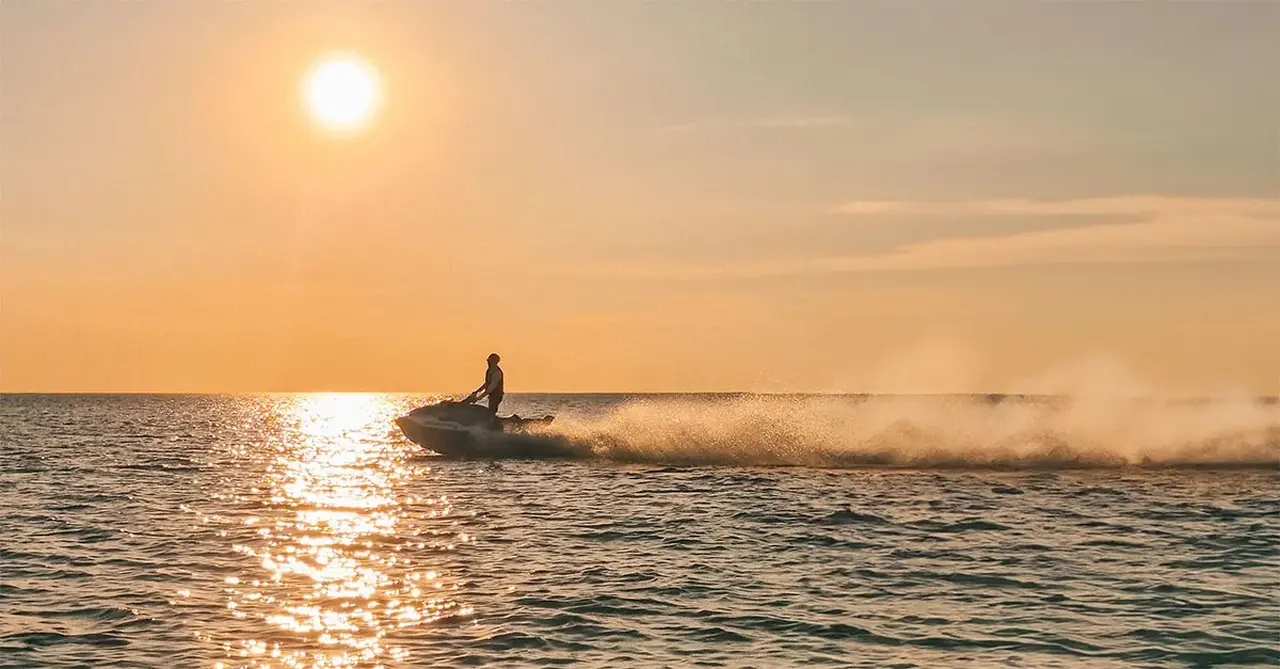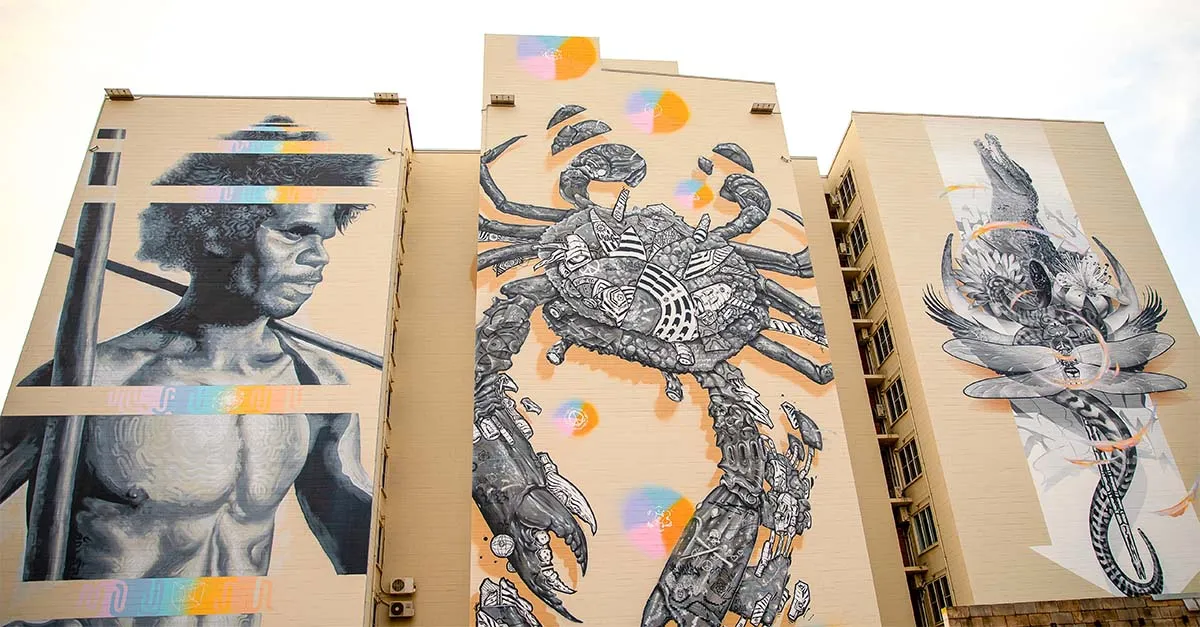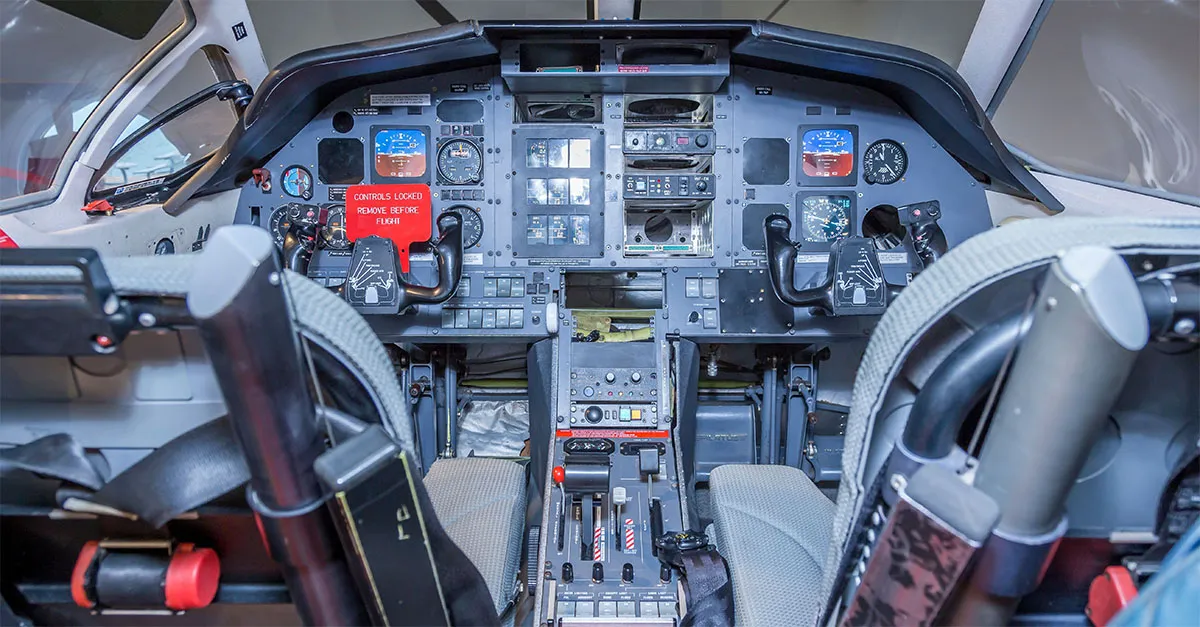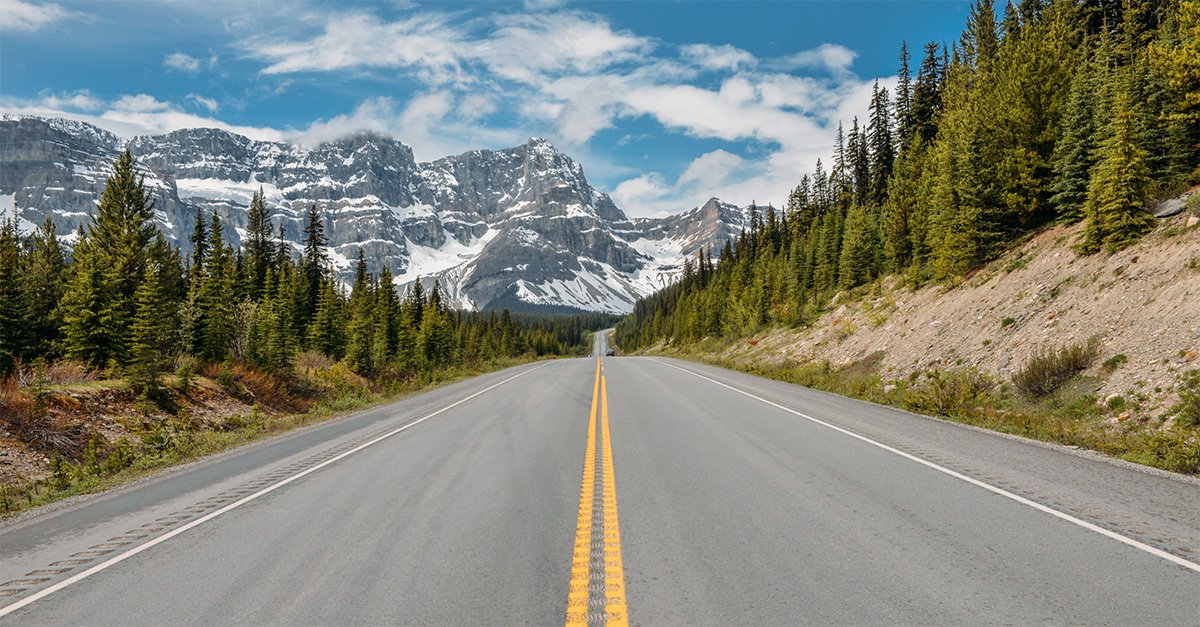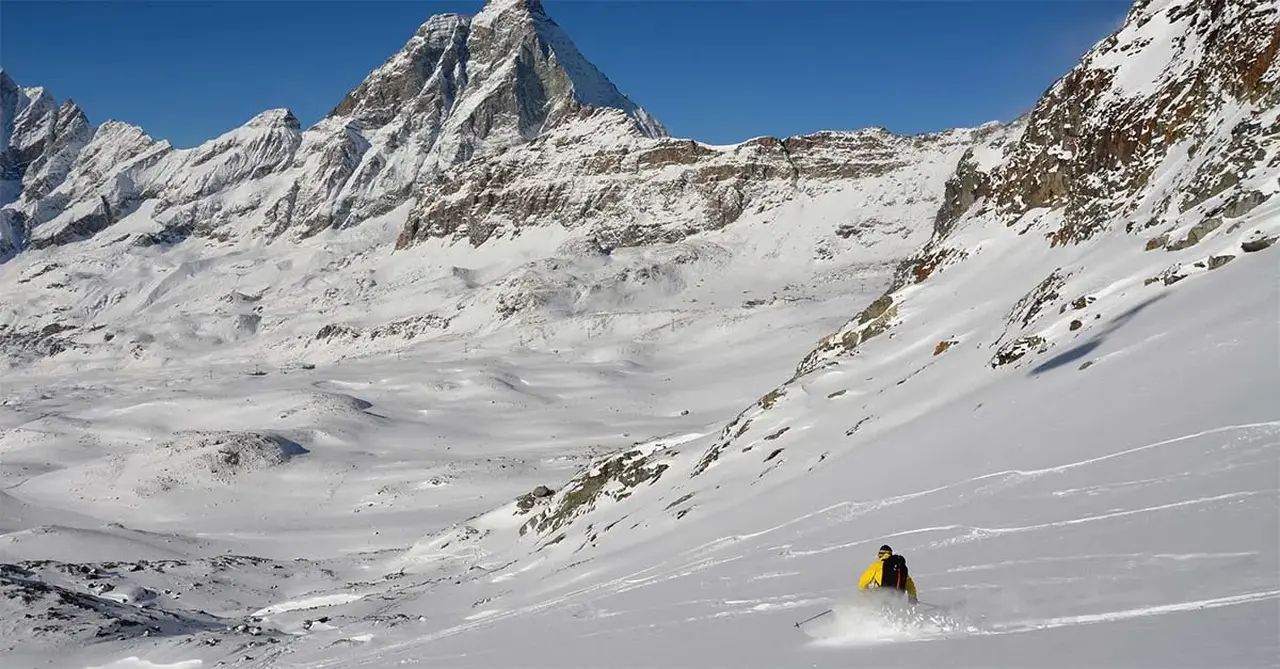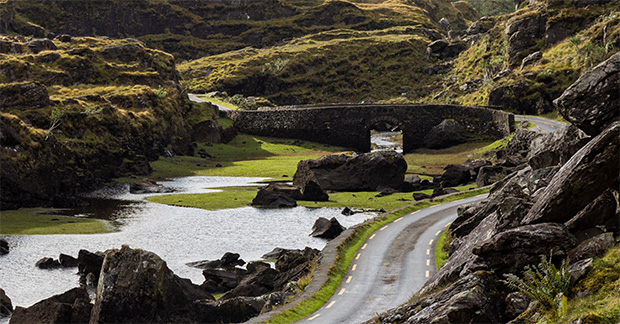Our guide to Darwin, Australia
Darwin is undergoing rapid redevelopment, making it the ideal spot to start an adventure in Australia’s Northern Territory
Click here to download and save as a PDF
There’s salt spray whipping through the air and the sun is edging its way above the horizon, turning the growing city skyline into a glorious dazzle of gold and pink – but there’s no time to stop and sightsee. Right now, I’m more focused on speed.
I keep pace with the line of jet skis snaking into view up ahead, each one zooming left and right in wide, undulating arcs over the waters of Darwin Harbour. We soar through switchback turns across a harbour five times the size of Sydney’s, watching the city wake up as we welcome the day with a dose of early-morning adventure.
This sunrise jet ski tour with local operator 00Seven is quite a change from the last time I toured Darwin Harbour a decade or so ago, when I sipped fizz and savoured the view on a gentle sunset catamaran cruise.
That’s not the only thing that’s different, though. I remember the Northern Territory capital as a low-rise, low-key spot with a laid-back vibe. But an influx of younger Aussies drawn by the city’s affordable housing and artists attracted by its burgeoning street art scene have bestowed a youthful, creative vibe on a downtown area that has been reinvented.
Darwin has always been the gateway to outback adventures in the Northern Territory – from former cattle stations turned luxury lodges to wildlife-filled national parks – but now it’s well worth sticking around for a few days in the city first.
Art in Darwin
A mural in Darwin. Image credit: SALTY TRAVELLERS
The most eye-catching change is the wealth of striking street art that has transformed the downtown area into an outdoor gallery. The Darwin Street Art Festival, which celebrates its 10th anniversary in May, attracts dozens of artists – from local Indigenous communities to recognised Australian and international designers – each year.
Over nearly a decade, they seem to have taken every bit of wall space as a blank canvas, transforming nondescript office buildings and blocks of flats into a backdrop for colourful crocodiles or tropical flora and fauna celebrating the area’s natural attractions.
There are also larger-than-life portraits, including one of Dr G Yunupingu, the most popular Aboriginal singer in Australian history, which presides over the arty epicentre of Austin Lane, shining a spotlight on the region’s cultural heritage.
If these giant murals weren’t already impactful enough, an augmented reality tour invites viewers to scan a QR code under each painting to see the image leap into life. Watching turtles swimming through the water and a giant crab with snapping pincers crawling languidly down the side of the building, or listening to Dr G Yunupingu’s best-known song while admiring each detail of the enormous image, proves there’s no end to the creativity on display.
Festival co-founder David Collins says: “I definitely think we have changed the city and given it a lot of character. People move through the city in different ways now. We’ll keep going until all the walls are full.”
Darwin waterfront
Snapper Rocks, Darwin. Image credit: Tourism NT/Shaana McNaught
The city’s waterfront precinct is undergoing just as much rejuvenation.
There’s a creative culinary scene at the likes of Snapper Rocks, with its menu of fresh, seasonal produce; relaxed small plates at Bella Bar; and sundowner cocktails at the recently opened Dock One bar, which has enviable 270-degree views across the water.
Dock One’s location on Stokes Hill Wharf is at the heart of yet more redevelopment, as home to the much anticipated Larrakia Cultural Centre. The £22 million development celebrating the traditional owners of the land around Darwin is scheduled to open in 2026. It’s part of a wider revitalisation of Stokes Hill Wharf, along with a new hotel and a clutch of restaurants and bars.
Museums in Darwin
The Royal Flying Doctor Service, Darwin Tourist Facility. Image credit: Tourism NT/Nick Pincott 2016
Farther along the wharf, within a few metres of the cruise terminal, sits an interactive museum dedicated to the Royal Flying Doctor Service, which provides Australia’s remote rural communities with healthcare, both preventative and in life-threatening emergencies. The hangar showcases the story of the ‘flying doctor’, as well as some of the aircraft once used to reach areas of the vast Northern Territory that are inaccessible by road.
Admission is £14.50 for adults and some of the proceeds go to the charity.
Commissionable tickets are available via Top End Marketing Co, which also contracts through operators such as Anzcro, AAT Kings and Journey Beyond to offer popular combination tickets with other Darwin and Top End attractions.
The museum also offers a virtual reality experience that recounts the bombing of Darwin Harbour in 1942, when more ordnance was dropped on the docks here than at Pearl Harbor.
That wasn’t the only dramatic moment in Darwin’s recent history, though: on Christmas morning 1974, Cyclone Tracy tore through the city, killing 66 people and reducing much of the centre to rubble. The Museum and Art Gallery of the Northern Territory updated its exhibit last December to mark 50 years since the disaster.
It’s a reminder that the city’s recent regeneration is just the latest chapter in a history of renewal – and a good starting point for an adventure through Australia’s ancient history and outback rock-art sites, as well as an introduction to the world’s oldest living culture.
Book it: AAT Kings’ new 11-day Northern Territory Explorer tour starts with three days in Darwin and visits Kakadu, Nitmiluk, Alice Springs and Uluru. Tour-only prices start at £3,902 in April and May 2026. It will operate as a small-group departure of 16 to 24 guests.
aatkings.com
APT’s 17-day Kimberley and Top End tour travels from Broome to Darwin via the Gibb River Road and El Questro, with stays in the Nitmiluk and Kakadu national parks, Arnhem Land and Ubirr. Land-only prices start at £7,995.
aptouring.com
What to see in Australia’s Northern Territory
Kakadu National Park: Australia’s largest national park has been home to Bininj and Mungguy Aboriginal people for more than 50,000 years. It is home to ancient rock-art sites, enormous escarpments and more than a third of the country’s bird species.
The Ghan: This luxury train service tracks the route taken by the overland telegraph line between Darwin and Adelaide, and later by the Afghan cameleers who helped build a vital railway line through the outback.
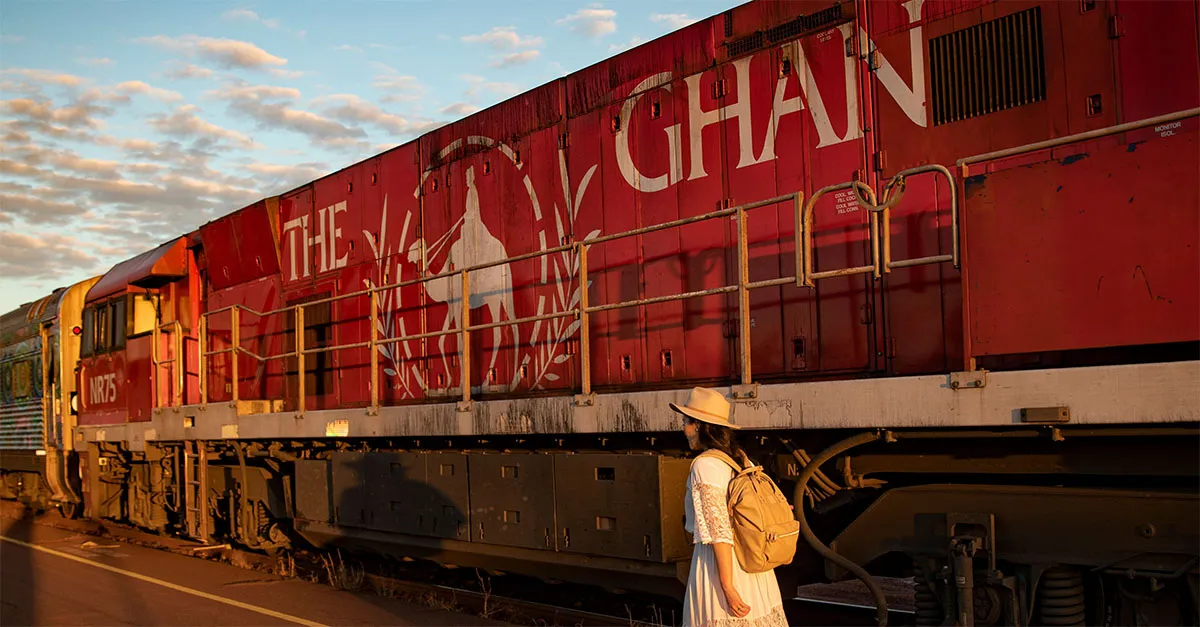
The Ghan train. Image credit: Tourism NT/Annie Nguyen
Litchfield National Park: Termite mounds might not sound like a key tourist draw, but the sheer power of nature at this national park – home of waterfalls, weathered sandstone pillars and an array of plant and animal life – is undeniable.
Nitmiluk Gorge: With towering sandstone cliffs that almost seem to glow red in the right light, it’s easy to see why this area is of such significance to the Aboriginal Jawoyn people. Expect hiking, crocodile-spotting cruises and even flightseeing over the rugged landscapes.
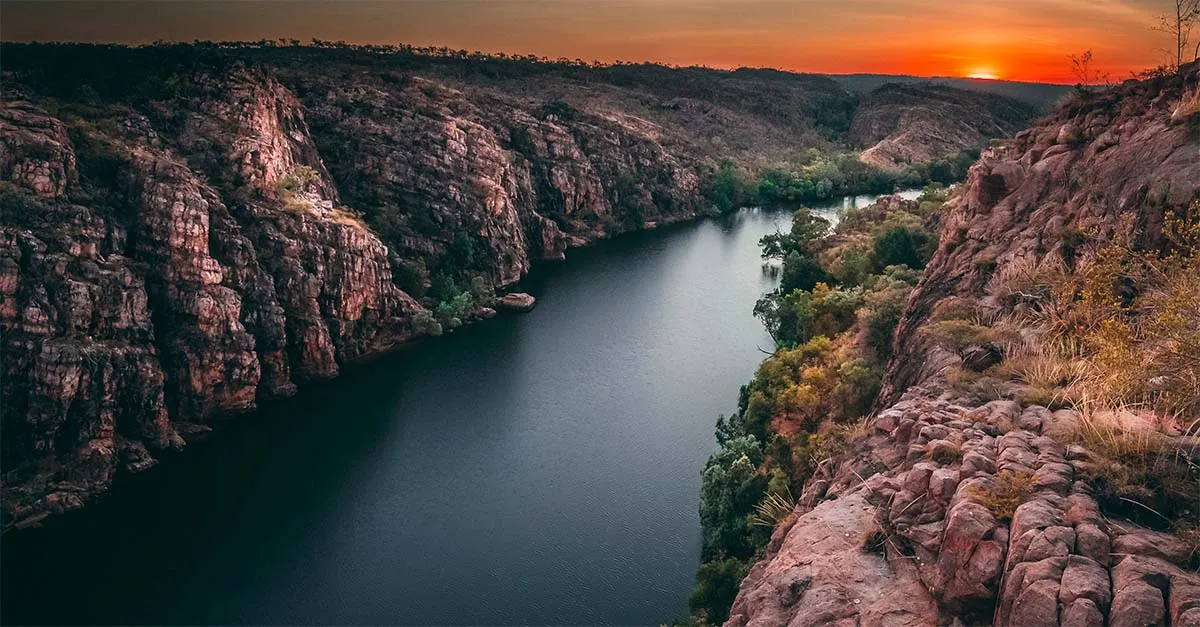
Nitmiluk gorge. Image credit: Shutterstock/Toby Grayson
Lead image credit: Tourism NT/@ferryhu_

